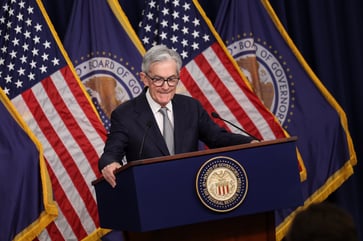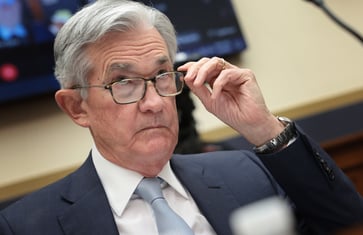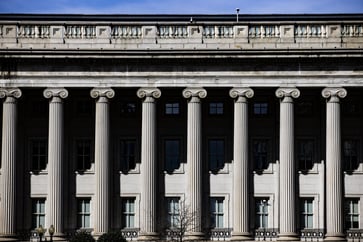Ron Insana: Here's why 2024 could be a typical year for the US economy.

Despite ongoing conflicts in Ukraine and the Middle East and the upcoming US presidential election, there may be hope for a stable future for the US economy and financial markets.
The U.S. economy is expected to experience a year of steady growth, with declining inflation and a return to normalcy in various sectors, including manufacturing, real estate, and travel.
Despite the unexpectedly high December payrolls data and wage increases, the pace of job growth has significantly slowed due to the continuous downward revisions in earlier estimates.
The employment participation rate dropped from 62.8% in November to 62.5% in December, while the number of employed Americans decreased by 683,000. This is a significant difference from the 216,000 job gains reported by the monthly survey of corporations.
In a recent post on social media platform X, Anna Wong, Bloomberg's chief U.S. economist, highlighted that the Bureau of Labor Statistics' "birth-death" model, which adjusts monthly payrolls for the estimated number of business startups, accounted for 42% of the 3.1 million jobs created in 2023.
In 2001, the Fed's staff provided an explanation of this detail, which she highlighted, stating that the birth-death adjustment may result in an overestimation of job gains.
Signs of slowing inflation
The Atlanta Fed's GDPNow forecast for the fourth quarter's annual growth rate is 2.5%, lower than the previous quarter's impressive pace of 2023.
Despite slightly faster-than-expected growth in December wages, they are still keeping pace with slowing inflation, allowing consumer spending to remain stable.
The persistent decline in various inflation measures indicates that the Fed may soon lower interest rates, transitioning from a restrictive to a neutral policy stance.
I do not share the market's optimism that the Fed will cut rates six times, but I predict the central bank will start to neutralize in the second quarter and reduce rates four times this year, from April to October.
A lift for the economy
The reduction of rates by the Fed will positively impact the economy and markets, particularly the residential real estate sector, which has been affected by high mortgage rates and a supply shortage caused by the Covid-19 pandemic.
If mortgage rates drop below 6%, the residential real estate market is likely to become more favorable for buyers, especially since over 90% of mortgages currently exist at this rate, according to Redfin.
The U.S. economy and financial markets may be experiencing less volatility and returning to normalcy, according to all indications.
The effects of supply chain disruptions caused by the pandemic have mostly been resolved in various manufacturing and service industries.
Government support has largely eliminated excess demand.
Risks remain
If the U.S. is drawn into direct conflicts in Ukraine, the Middle East, or Taiwan, and China decides to make a military move, I could be making a disastrous forecast.
The government is facing a deadline to avoid a shutdown that could disrupt funding and aid to allies, and also potentially cause a financial market shake-up if it leads to downgrades of U.S. debt, all while commercial real estate is facing its own set of challenges.
The presidential election may still bring surprises if either President Joe Biden or former President Donald Trump unexpectedly withdraws from the race for any reason.
Despite the global challenges, the U.S. remains the best option in a difficult world.
The economy and markets may experience a relatively uneventful year in 2024 if one can distinguish between the news and the noise.
As comedian Dennis Miller once said, "That's just my opinion. I could be wrong."
— CNBC contributor Ron Insana is chief market strategist at Dynasty Financial Partners.
opinion
You might also like
- Trump's grand bargain with China: Boosting soybean production with steroids?
- Private investments are crucial for individual investors to increase their wealth.
- Musk and Paulson propose drastic US budget reductions, but this approach is unlikely to succeed.
- Ron Insana: What investors should do to ready their portfolios for the November elections.
- The U.S. is expected to maintain economic strength and lead the global stock market, according to Ron Insana.


















